September 30, 2025 – “Healthy” is subjective. What feels better-for-you may not be better-for-everyone-else. Although health may look different to everyone, one thing’s clear: the focus on wellness is here to stay, and operators need to be part of it. That’s because 61% of consumers are interested in purchasing functional foods & beverages.1
But it’s hard to sort the facts from fiction and know what functional benefits mean the most to consumers right now. So, the Rubix Foods consumer insights team went directly to the source to find out which functional benefits consumers are seeking from food and beverage brands, and the label claims they’re willing to spend their money on.
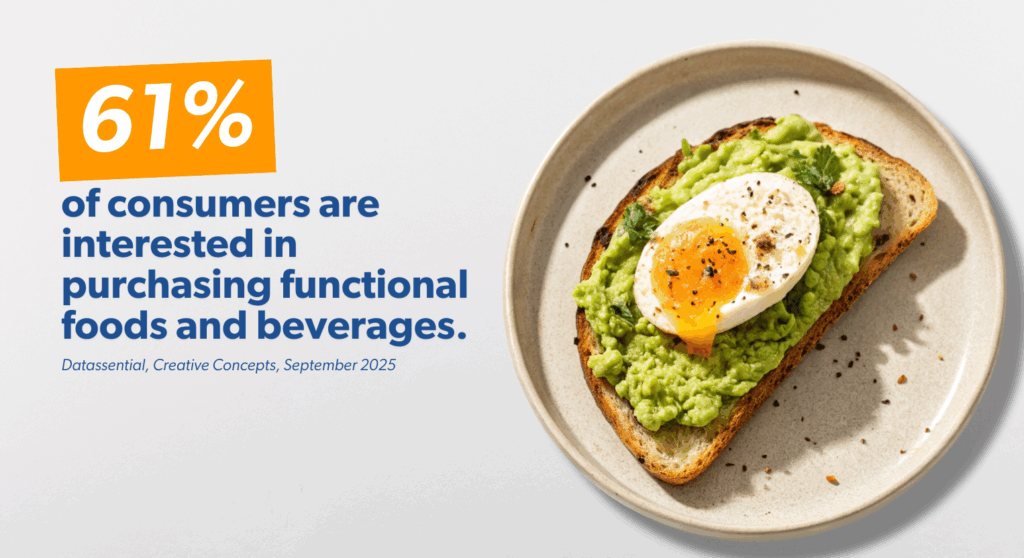
Apparently, we’re all running on fumes. 58% of consumers said they’d be motivated to buy food and beverage products that give them an energy boost. This was the #1 label claim that emerged from our study and was the most important to Millennials.2
While 66% of Americans who drink coffee daily3 aren’t likely to give up their regular cup of joe, many are also reaching for other functional beverages to fuel their day. Yerba mate, for example, is an herbal tea with nearly the same amount of caffeine as coffee, has long been popular in South America. It’s projected to grow 33% on U.S. restaurant menus over the next 4 years.4
Beverages aren’t the only source of caffeine though. 78% of consumers turn to food to reduce fatigue and tiredness.5 Additionally, “energy boosting foods for women” has been a breakout search term on Google over the past 12 months.6 So, what kind of diet will give you this much-needed boost of energy? Nutrient-dense foods rich in vitamins and minerals, complex carbohydrates and lean proteins.
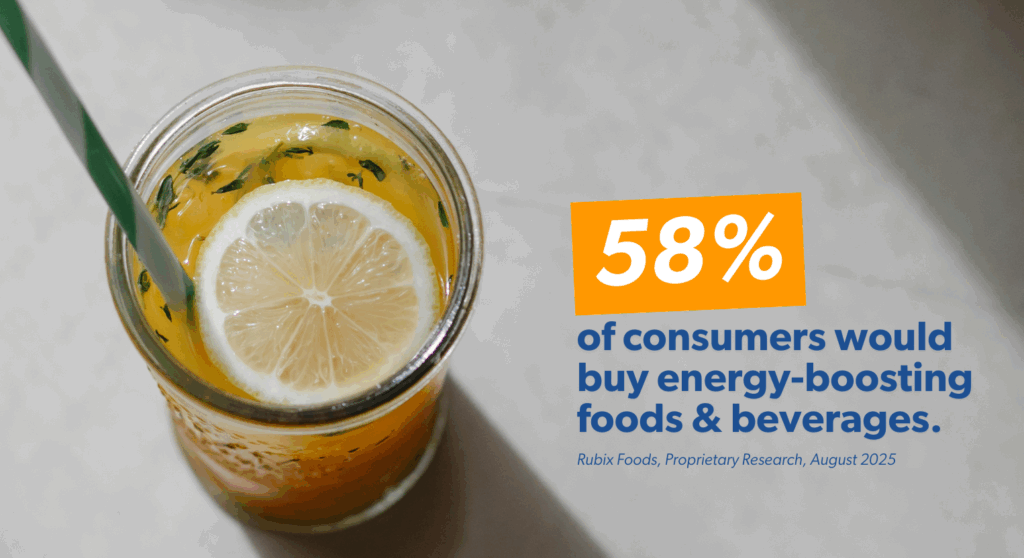
It’s not all in your head, but it is all over your TikTok feed. Conversations around brain health and mental focus are growing and 50% of consumers said they would be motivated to purchase a food or beverage item that offers brain health support.2 Seeing this claim on a label isn’t as common as some of the other functional benefits from our research, but with half of consumers being interested in it, it’s certainly worth paying attention to.
Two-thirds of consumers have reported using food to boost their mood, brain health or cognition in the past year, and 73% have relied on food to improve mental sharpness.7 While many are turning to more traditional sources of cognitive support like antioxidants, magnesium and omega-3, those who are more trend-forward are trying adaptogens and nootropics. Adaptogens like ashwagandha and ginseng improve concentration and clarity, whereas nootropics like l-theanine and lion’s mane mushroom support cognitive functions. Lion’s mane mushrooms are becoming more mainstream, too, growing 50% on U.S. restaurant menus in just the past 12 months.4
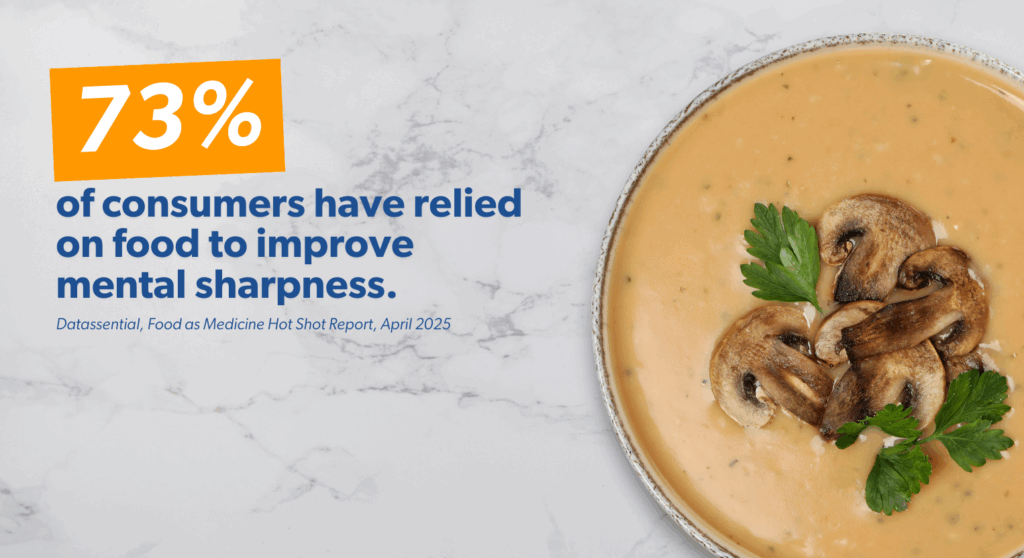
Our society is obsessed with protein, so it was no surprise to see that 48% of consumers from our study were drawn to high-protein label claims. This number was even higher among Gen Xers at 52%.2 Physically, protein gives us energy, makes us feel full for longer and builds muscle. Mentally, we feel less guilty about what we’re consuming when there’s a prominent protein callout somewhere on the package or menu description. In our heads, protein = healthy.
Brands like Starbucks are doubling down on the consumer demand for protein. The beverage leader recently launched protein cold foams, which add about 15 grams of protein to any beverage it’s on, and a lineup of protein lattes made with protein-boosted milk. And you know what? Consumers are happy to pay for it. Research shows that consumers will pay 10% more for a beverage with a high-protein claim.8
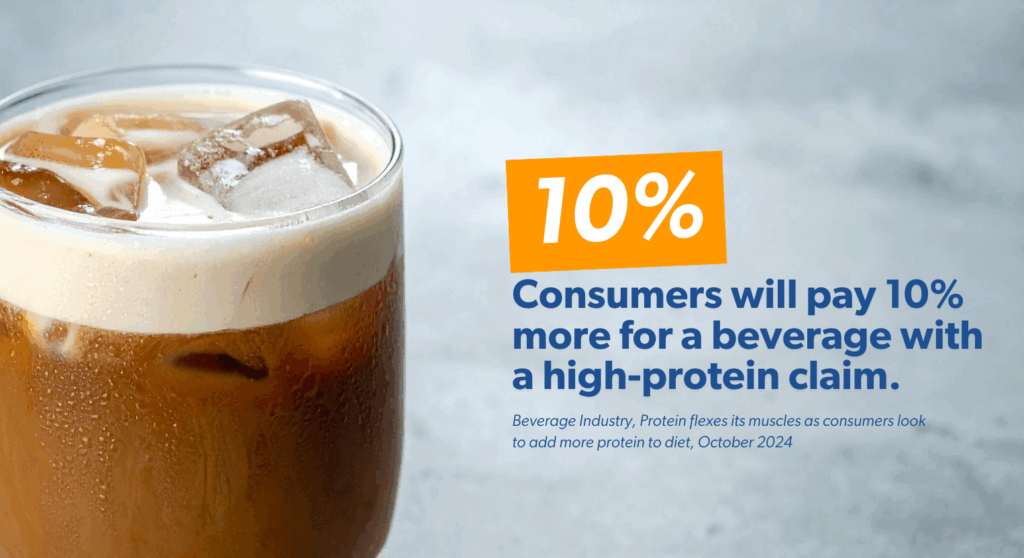
8 in 10 consumers have taken steps to improve their gut health over the past year.7 Some of the gut-healthy habits being prioritized are increasing fiber, drinking more water, and limiting alcohol intake. But it’s Gen Z, the leaders of the sober-curious movement, who have leaned into the latter by swapping pre-game beers for prebiotic sodas. Gen Z consumers are the source of inspiration for functional beverage innovation.
Brands like Olipop and Poppi are capitalizing and cashing in on the growing demand for gut health support – a benefit that would motivate 40% of consumers to purchase an item, according to our proprietary research.2 This is especially true for parents of 4–5-year-olds, with 90% saying they are interested in products that support gut health.9 “Listening to your gut” has taken on a whole new meaning.
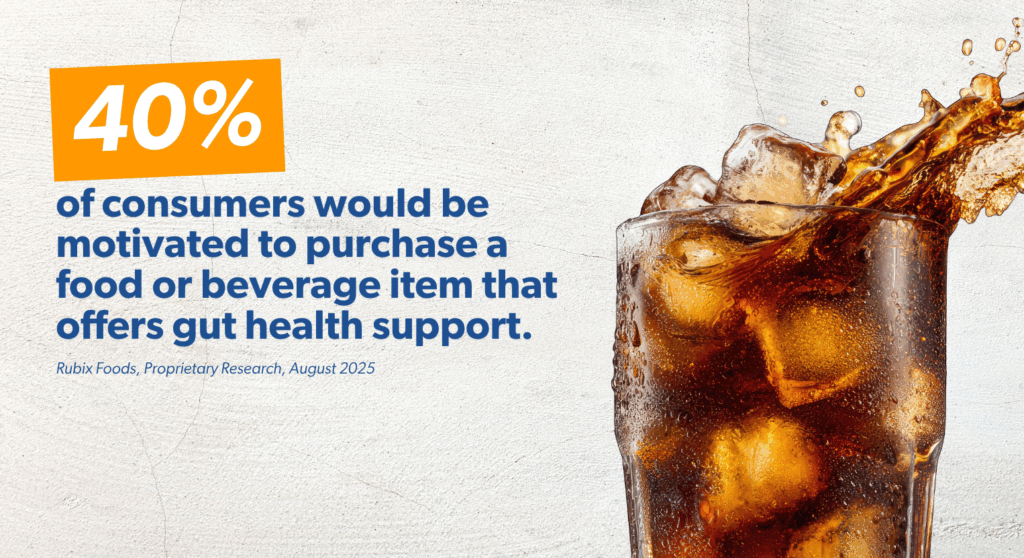
Life is short, adulting is hard and we deserve a little sweet treat to take the edge off. Google searches for “healthy sweet treats” have increased 90% since the beginning of the year.6 The culprits behind this influx of searches? Probably Gen Z. 32% of Gen Zers have “a little treat” at least once per day – more than any other generation.5
Don’t mistake “a little treat” as something unhealthy, though. 34% of Gen Zers believe that little treats can be both healthy and indulgent. As much as you’re able to emphasize the healthy components of a treat, the more you’ll appeal to the market of mindful snackers. 1 in 5 consumers are more likely to forgive the indulgence if the treat is “good for me.”5
If you can’t add something beneficial to your sweet treat, like protein, then take something out, like sugar. Low sugar is a label claim that 43% of participants from our research are drawn to. Furthermore, this was the top choice among Boomers, garnering 55% of the votes.2
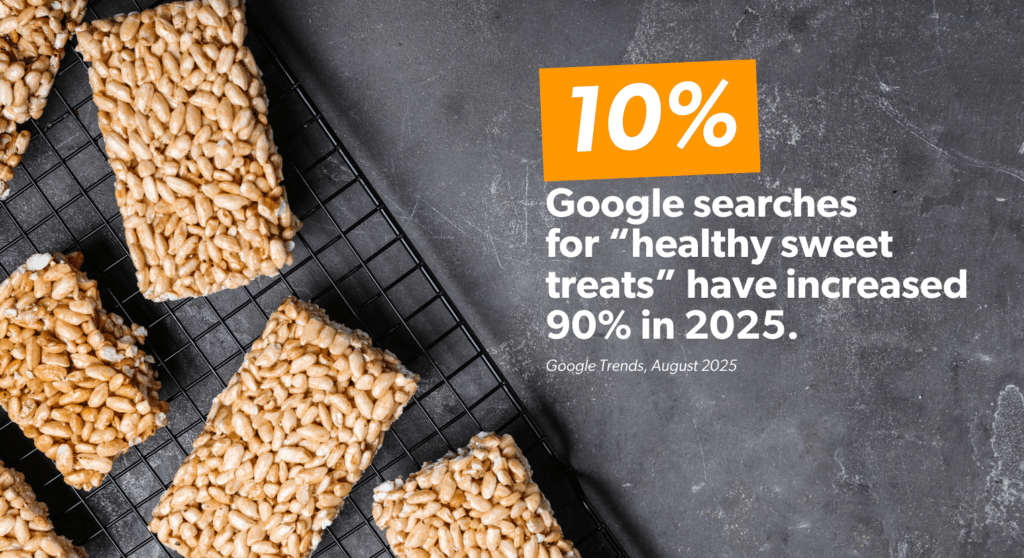
Give your food a purpose and tailor your menu or product offerings to the growing demand from consumers for these health-focused label claims. Need help? No problem. Collaborate with our R&D team on a custom functional solution that works for you and your customers.
1 – Datassential, Creative Concepts, September 2025
2 – Rubix Foods, Proprietary Research, August 2025
3 – National Coffee Association, April 2025
4 – Datassential, MenuTrends, September 2025
5 – Datassential, Little Treat Culture, September 2025
6 – Google Trends, August 2025
7 – Datassential, Food as Medicine Report, April 2025
8 – Beverage Industry, October 2024
9 – Food Institute, June 2025